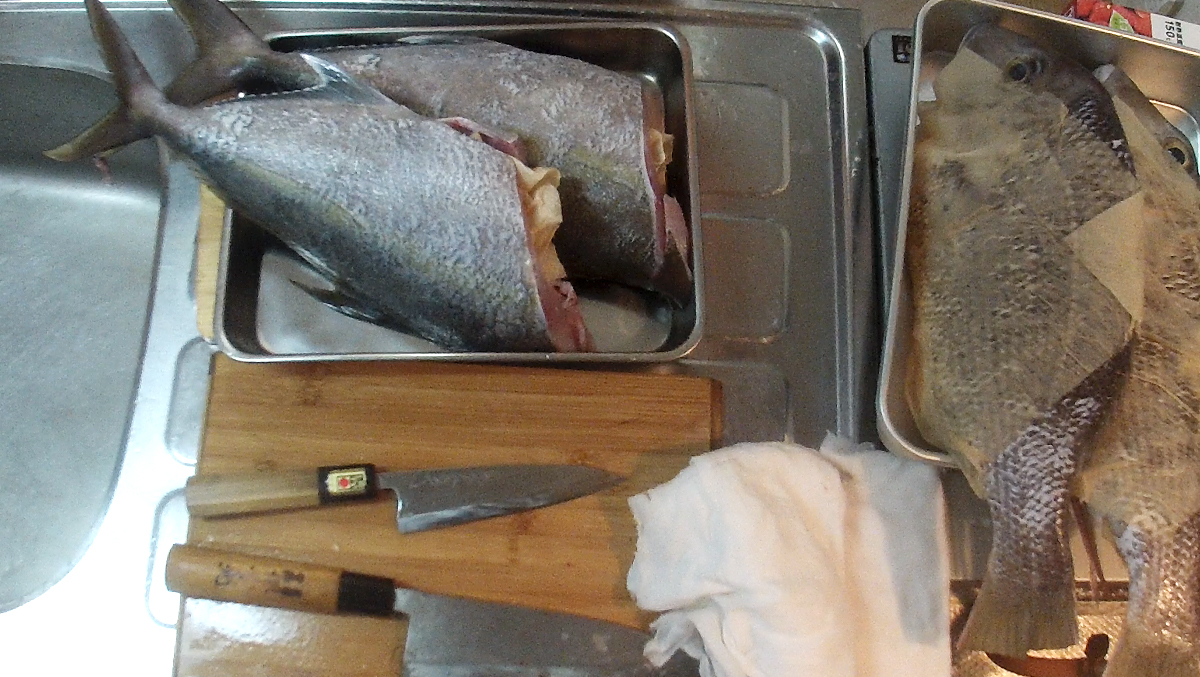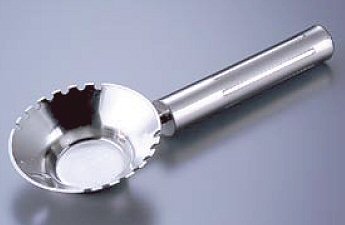How to prepare fish for aging
With Ike-Jime closing, moderate cooling, and proper cleaning, you can enjoy your fresh catch for days without freezing. The tasty period of my common catch here in Okinawa, for example, would be small tunas for 2 days, amberjacks for 4 days, snappers for 5 days, and groupers for 6 days.
In this post, I’d like to discuss how to clean fish to prepare for aging.
Here is the video to start with. I’m not a professional chef. But here’s how I do it.
Scale
Since I found this Ginrin Fish Scaler, scaling has became so much easier for me. The sharp edged cup slides under scales and lifts them off. Because it doesn’t flick off scales, you don’t mess your kitchen with flying scales. Of course you will get a few, but as a matter of fact, my wife used to forbid me scaling in the kitchen but she allows me now. That is a huge difference! I know many anglers around the world would agree with me on that. The scaler also has jaggy edges on both sides of the cup and these work very well around the fins.
I have it for sale at JPY2692 + shipping and handling.
Head off
I have cut the head off in the video but you don’t have to at this point. In fact, you better not to. You should make the least possible cuts on fish when you age fish. If you leave the head on, make sure to take out gills and clean blood chunks around the head thoroughly.
But a lot of times I find that cutting the head off at this point will just make everything easy. Storing will be easy. Cleaning the head will be easier when it’s separated too.
I love to cook the fish head by the way. I think the most tastiest meat is concentrated in the head. Neck has such silky texture. Cheek is delicate and awesome. Around pectoral fins is juicy flaky meat. I’m not a big fan of eye sockets, but it contains lots of essential fatty acids like DHA, which are not to be missed.
I usually cut the head off at this point. Clean and store separately.
Brush off blood
Blood is bad. Yes, that’s the code.
There’s a major blood vessel running on the belly side of the spine. When you open the belly and take guts out, you will see air bladder. When you cut it open, you will see reddish black blood vessel on the spine. You want to thoroughly clean this with a toothbrush or a bunch of toothpicks. This is very important process when you age fish. Without complete cleaning, aging would become smelly and fishy.
After you brush it off, pat to dry. No fresh water on fish from this point.
Whatever you do, do not wash fish with fresh water after this.
Wrap
No matter where you store fish, wrap it with paper towel. You want paper towel to absorb drips from the fish. The last thing you want to do is to let it soak in its drips. That would be the end of sashimi. If you store for several days, you should change paper towel everyday.
Some people don’t like to store fish in fridge because the circulated air will dry out the fish. It’s true that fish dries out faster than meats. But a little dry surface is good to preserve hygiene and moisture inside. I think it’s perfectly OK to wrap fish only with paper towel and keep it in the fridge. The circulated air dries only the skin.
You sure want to leave the skin on at this point no matter what. Big fish like tuna would need to be sliced into fillet bars to be kept. But after aging, sushi chef would scrape all the surfaces of the meat. You want to keep the fish as a whole as much as possible, with as few cuts as possible. We are talking about aging the fish. You want to leave the skin on for as long as you can. And with the skin on, and with the paper towel to absorb drips and avoid direct contact with circulated air, leaving fish in the fridge is no problem.


